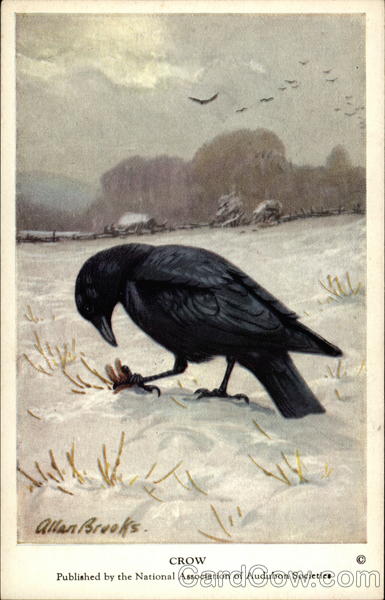Front:
allan Breoks.
CROW
Published by the National Association of Audubon Societies
Back:
No. 23 Crow
Length 19 inches
secution that has been directed against hima
e Larious points
food
No bird is better known throughout the length
and breadth of our country than the Crow. Al-
though this black marauder has few friends, his
sharp wits and cunning everywhere make it pos-
sible for him to hold his own against all the per-
In-
deed, it seems altogether unlikely that the hum-
bers of this resourceful bird will ever be greatly
reduced through campaigns of destruction.
In spite of his bad reputation, there are those
of view. Even the Bureau of Biological Survey,
the Crow, tells us that at certain seasons and
under certain conditions, the Crow is a very use-
such as May beetles, June bugs, grasshoppers and
grubs. During the fall and winter Crows congre-
gate in large numbers at some favorite roosting-
place, usually a dense woodland or a wooded
island in a lake or river.
The nest is built of sticks and lined with grass,
moss, or the bark of the grape-vine. It is usually
well up in trees, and contains from four to six
bluish eggs thickly marked with shades of brown.
Classification: Order Passeres. Family Corvida.
Scientific name: Corvus brachyrhynchos.
Range: Throughout temperate North America.
No. 23 from set of 50 Winter Birds of the Northeastern United
States. Published by the National Association of Audubon So-
cieties, 1974 Broadway, New York City. Price per set, in a box,
$1.00 post paid.



